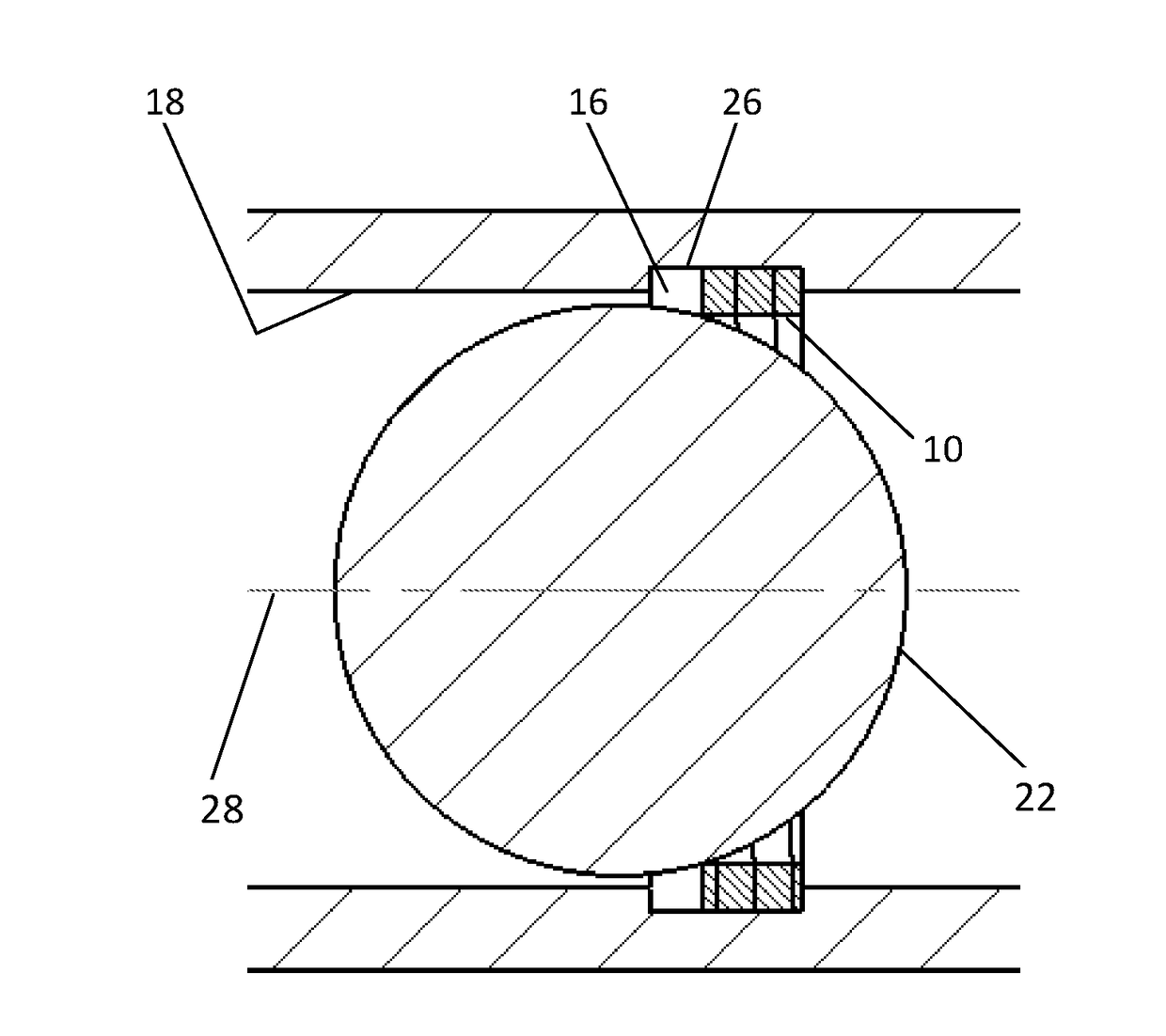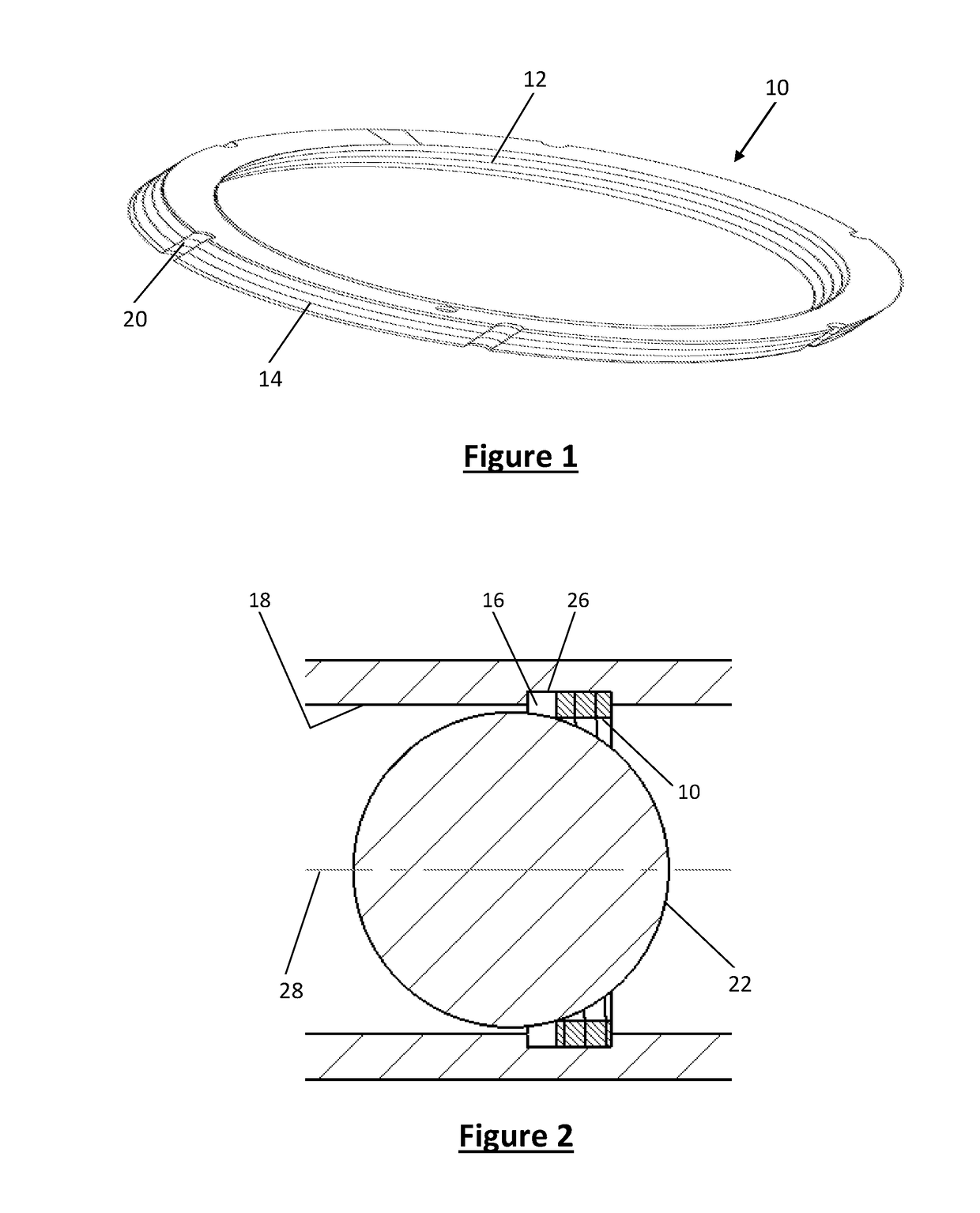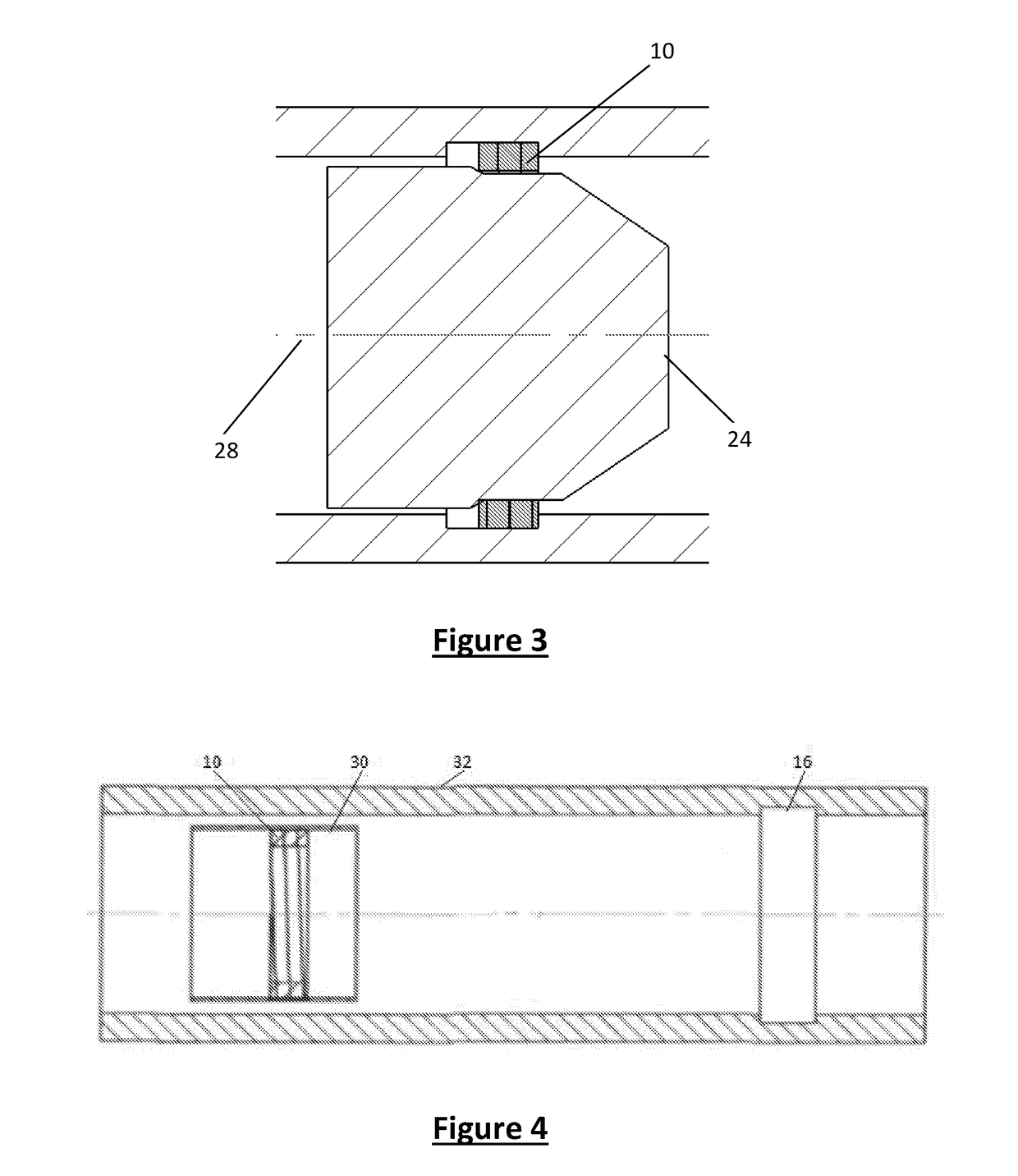Wellbore Isolation Method for Sequential Treatment of Zone Sections With and Without Milling
a technology of zone section and isolation method, which is applied in the direction of wellbore/well accessories, fluid removal, sealing/packing, etc., can solve the problems of limiting the depth at which plugs can be used, the amount of water it takes, and the inability to easily mill/cut plugs after being s
- Summary
- Abstract
- Description
- Claims
- Application Information
AI Technical Summary
Benefits of technology
Problems solved by technology
Method used
Image
Examples
Embodiment Construction
[0059]Referring to FIG. 1 a round shaped adaptive seat 10 is illustrated. It is preferably a continuous coil of preferably flat material that presents an inner surface 12 and an outer surface 14. Preferably surfaces 12 and 14 are aligned for each winding when the adaptive seat 10 is allowed to relax in a retaining groove or recess 16 located in a tubular such as casing or liner or sub 18. Alternatively the outer surface 14 can have surface treatment or texture to bite into or penetrate into the tubular wall when allowed to relax into contact with the tubular wall for support of an object such as ball 22 or dart 24 by resisting shear stress transmitted to adaptive seat 10. Since the seat 10 is delivered compressed to a smaller diameter there can optionally be notches 20 in outer surface 14 to reduce the force needed to reduce the diameter of the seat 10 for running in. Notches 20 also reduce the stress in the adaptive seat. Optionally notches such as 20 can also be on inside surface ...
PUM
 Login to View More
Login to View More Abstract
Description
Claims
Application Information
 Login to View More
Login to View More - R&D
- Intellectual Property
- Life Sciences
- Materials
- Tech Scout
- Unparalleled Data Quality
- Higher Quality Content
- 60% Fewer Hallucinations
Browse by: Latest US Patents, China's latest patents, Technical Efficacy Thesaurus, Application Domain, Technology Topic, Popular Technical Reports.
© 2025 PatSnap. All rights reserved.Legal|Privacy policy|Modern Slavery Act Transparency Statement|Sitemap|About US| Contact US: help@patsnap.com



